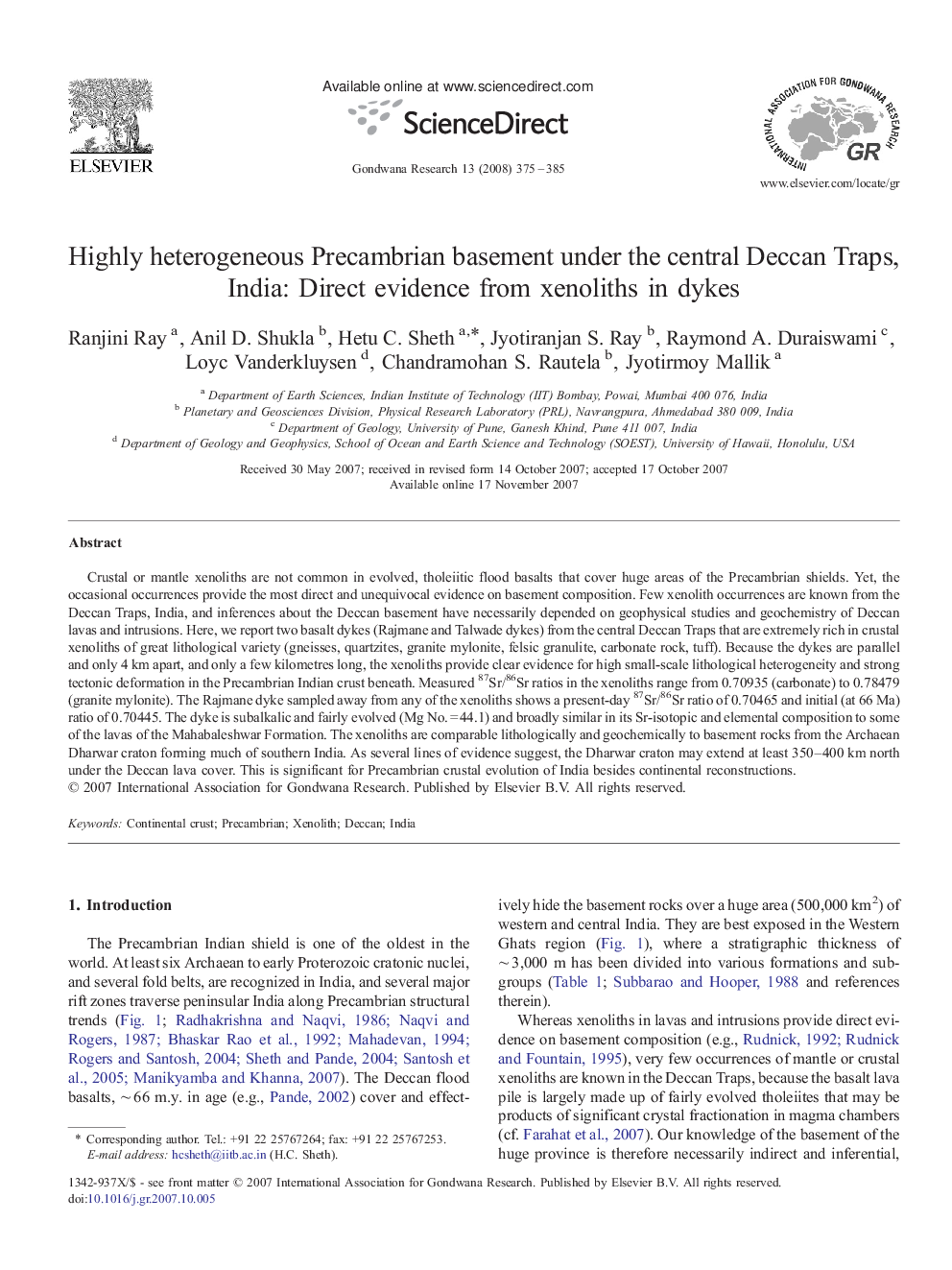| Article ID | Journal | Published Year | Pages | File Type |
|---|---|---|---|---|
| 4728006 | Gondwana Research | 2008 | 11 Pages |
Crustal or mantle xenoliths are not common in evolved, tholeiitic flood basalts that cover huge areas of the Precambrian shields. Yet, the occasional occurrences provide the most direct and unequivocal evidence on basement composition. Few xenolith occurrences are known from the Deccan Traps, India, and inferences about the Deccan basement have necessarily depended on geophysical studies and geochemistry of Deccan lavas and intrusions. Here, we report two basalt dykes (Rajmane and Talwade dykes) from the central Deccan Traps that are extremely rich in crustal xenoliths of great lithological variety (gneisses, quartzites, granite mylonite, felsic granulite, carbonate rock, tuff). Because the dykes are parallel and only 4 km apart, and only a few kilometres long, the xenoliths provide clear evidence for high small-scale lithological heterogeneity and strong tectonic deformation in the Precambrian Indian crust beneath. Measured 87Sr/86Sr ratios in the xenoliths range from 0.70935 (carbonate) to 0.78479 (granite mylonite). The Rajmane dyke sampled away from any of the xenoliths shows a present-day 87Sr/86Sr ratio of 0.70465 and initial (at 66 Ma) ratio of 0.70445. The dyke is subalkalic and fairly evolved (Mg No. = 44.1) and broadly similar in its Sr-isotopic and elemental composition to some of the lavas of the Mahabaleshwar Formation. The xenoliths are comparable lithologically and geochemically to basement rocks from the Archaean Dharwar craton forming much of southern India. As several lines of evidence suggest, the Dharwar craton may extend at least 350–400 km north under the Deccan lava cover. This is significant for Precambrian crustal evolution of India besides continental reconstructions.
